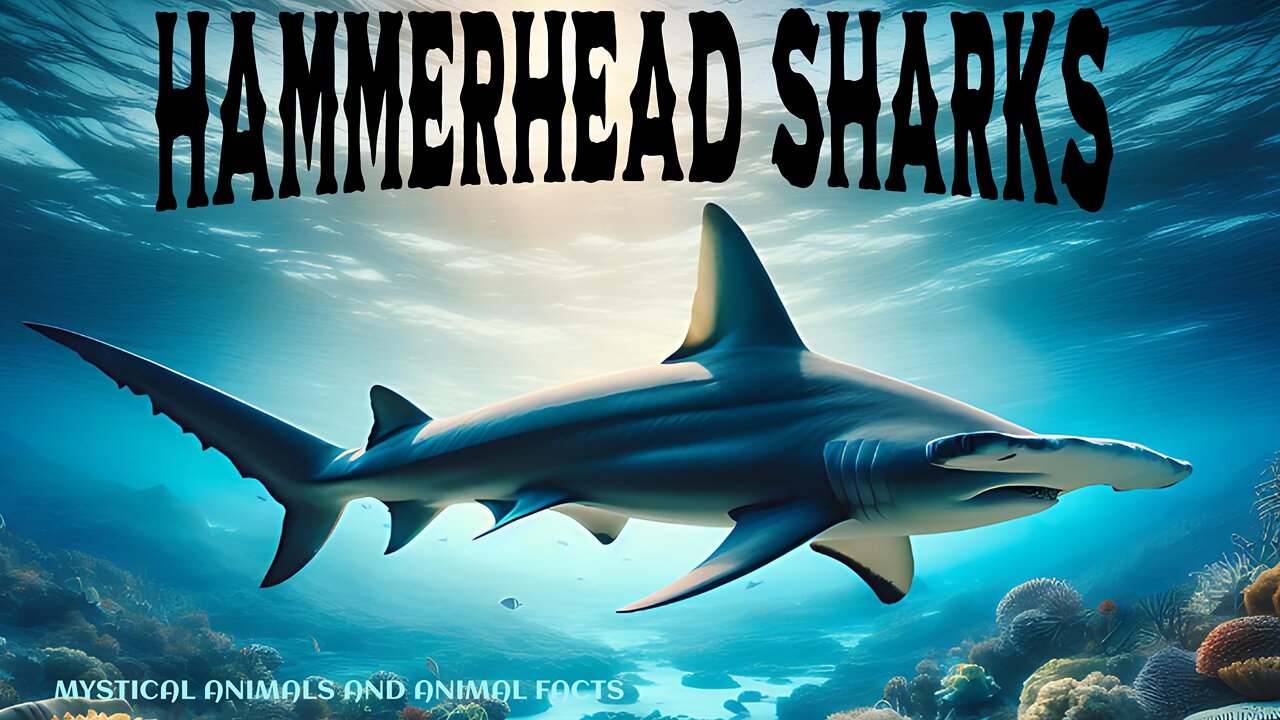Premium Only Content

The hammerhead shark - A unique hunter of the seas - mini-documentary
With its distinctive, hammer-shaped head, the hammerhead shark is one of the most famous sharks in the world's oceans. This unusual head shape, known as a cephalofoil, not only serves as a sensory organ, but also gives it an unmistakable silhouette. Of the nine known species, the great hammerhead shark is the largest, measuring up to six meters in length, while the lesser hammerhead shark remains significantly smaller.
Hammerhead sharks are found in tropical and temperate coastal waters worldwide. They prefer shallow shelf seas, coral reefs and occasionally deeper regions. Hotspots are the Galápagos Islands, the coasts of Hawaii and the Great Barrier Reef. Some species migrate seasonally to find food or suitable breeding grounds.
The hammerhead shark improves its sensory perception: there are thousands of ampullae on the underside of the lorenzini that detect the electrical fields of prey such as rays or crabs. The laterally arranged eyes enable an almost 360-degree view, which increases hunting efficiency. In addition, the broad head structure increases maneuverability when swimming.
Hammerhead sharks are skillful hunters. The great hammerhead shark uses its head to fix stingrays on the seabed before it bites. Their diet includes fish, squid, crustaceans and even other sharks. Thanks to their excellent sensory organs, they can even detect prey hidden in the sand.
During the day, some species, such as the scalloped hammerhead shark, form large schools that can comprise hundreds of animals. These groups can serve as protection from predators or for social interaction. At night, however, they hunt individually.
Hammerhead sharks are viviparous, meaning they give birth to live young. After a gestation period of 10-12 months, the female gives birth to 12-40 young, which are immediately independent. The birthing grounds are often located in protected coastal waters, where the young are safe from predators.
Many species are considered threatened with extinction. The IUCN lists the great hammerhead shark and the scalloped hammerhead shark as “critically endangered”. The main threats are bycatch in fishing nets, targeted hunting for the shark fin industry and habitat loss. Their slow reproduction increases the threat.
As apex predators, hammerhead sharks regulate the populations of their prey, such as rays. This prevents the overgrazing of mussel beds and maintains the balance of ecosystems. Their disappearance would have a cascading effect on marine food webs.
Hammerhead sharks are not considered aggressive towards humans. Attacks are extremely rare and are usually the result of provocation. Diving tourism promotes their image as a fascinating animal worthy of protection. Nevertheless, respect and caution are required.
With their unique biology and key ecological role, hammerhead sharks remain symbols of the mysteries and fragility of the oceans. Very fascinating sharks. I would really appreciate a like and a subscription.
Shirts and more
Designs Redbubble
https://www.redbubble.com/people/ReneMM/shop?asc=u
Spreadshirt.at
https://www.spreadshirt.at/shop/user/renemm/?srEdit=pa#?affiliateId=1257693
Spreadshirt.com
https://www.spreadshirt.com/shop/user/renemm/?srEdit=pa#?affiliateId=11625
Shirtee.at
https://www.shirtee.com/de/catalogsearch/result/index/designer_id/112048/all_stores/
1/
Pictures
https://fineartamerica.com/profiles/rene-mitterlehner
-
 1:06:09
1:06:09
Tucker Carlson
5 hours agoUS Government Admits Chemtrails Are Real (It's Worse Than You Think). Dane Wigington Reveals All.
1.15K55 -
 1:51:06
1:51:06
Redacted News
2 hours agoTrump Rolling Out $2,000 STIMULUS Checks in 2025 as the U.S. Economy Flashes RED | Redacted News
120K76 -
 LIVE
LIVE
Dr Disrespect
6 hours ago🔴LIVE - DR DISRESPECT - ARC RAIDERS - THE VENATOR SLAYER
1,494 watching -
 13:26
13:26
Cash Jordan
52 minutes agoChicago "RIOTERS" Get CRUSHED... Mayor FREAKS as 'Imported Mob' HAMMERED BY MARINES
13 -
 DVR
DVR
vivafrei
4 hours agoOstrich Farm Update w/ Chris Dacey; Jan. 6 Pipe Bomber IDENTIFIED? w/Kyle Serraphin & MORE!
59.8K36 -
 UPCOMING
UPCOMING
The Amber May Show
4 hours agoShutdowns, Shakeups, and 50-Year Mortgages | Sam Anthony
581 -
 LIVE
LIVE
StoneMountain64
4 hours agoBattlefield REDSEC $100k tourney tomorrow
212 watching -
 LIVE
LIVE
GritsGG
2 hours ago#1 Most Warzone Wins 3957+!
68 watching -
 2:00:02
2:00:02
The Quartering
4 hours agoDemocrat Civil War After Collapse, Viral Wedding Ring Insanity, New Trump Pardons & Huge Trans Ban
155K57 -
 LIVE
LIVE
ZWOGs
3 hours ago🔴LIVE IN 1440p! - ARC RAIDERS! Grinding XP and Upgrades! - Come Hang Out!
73 watching